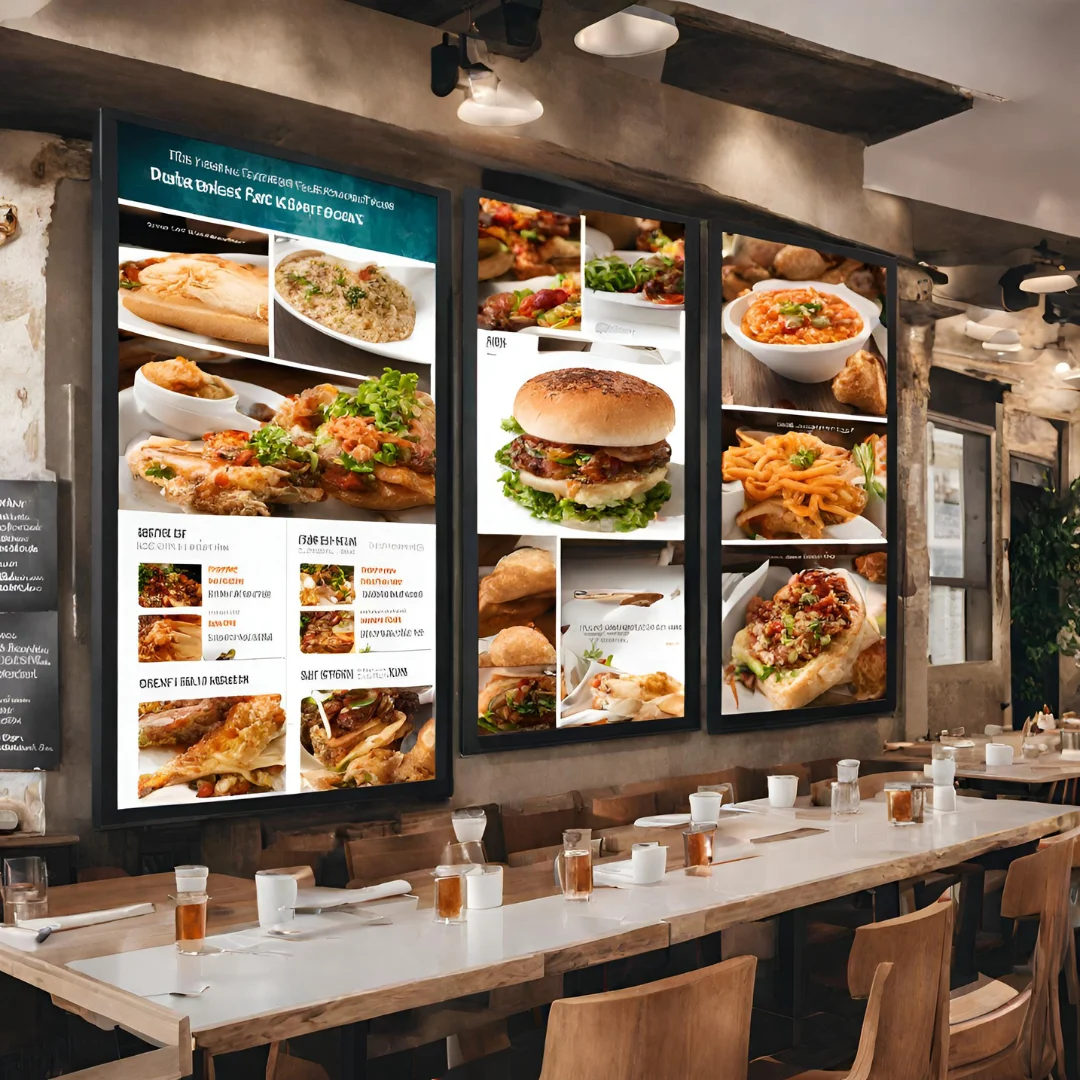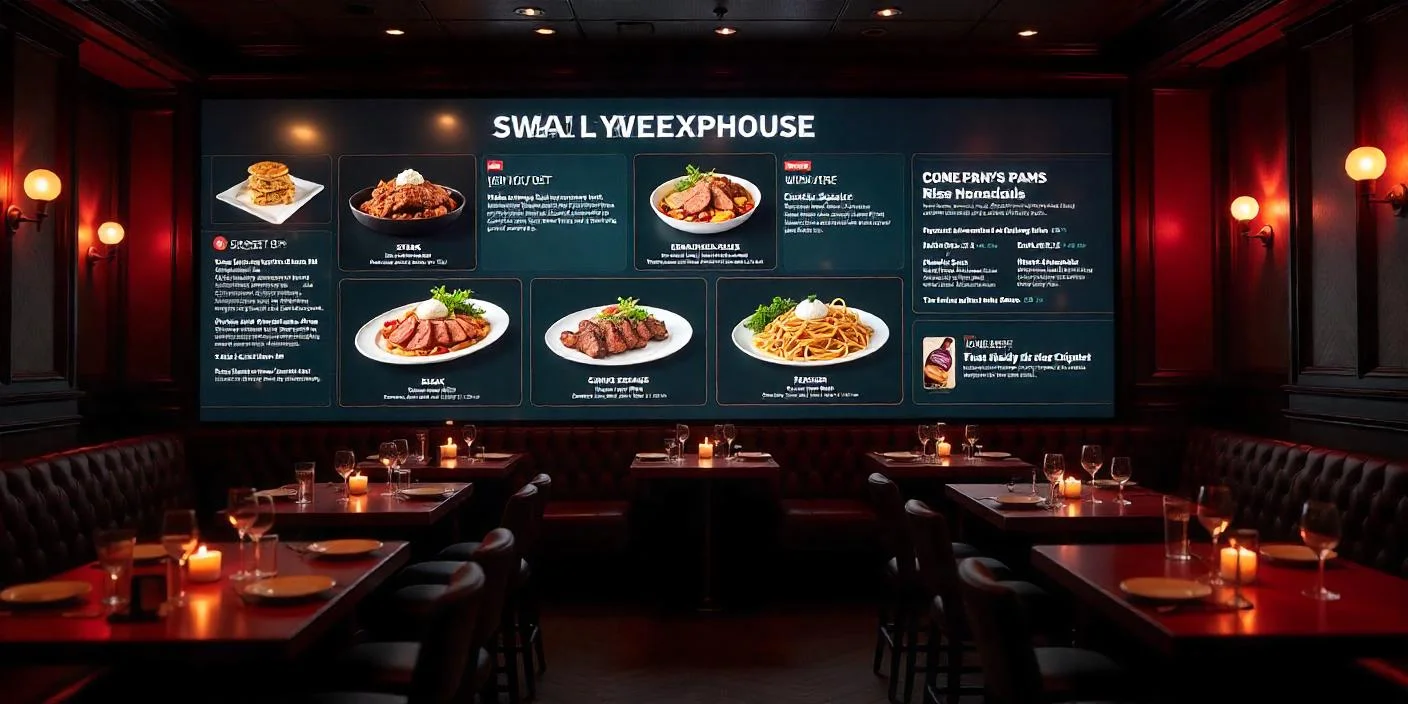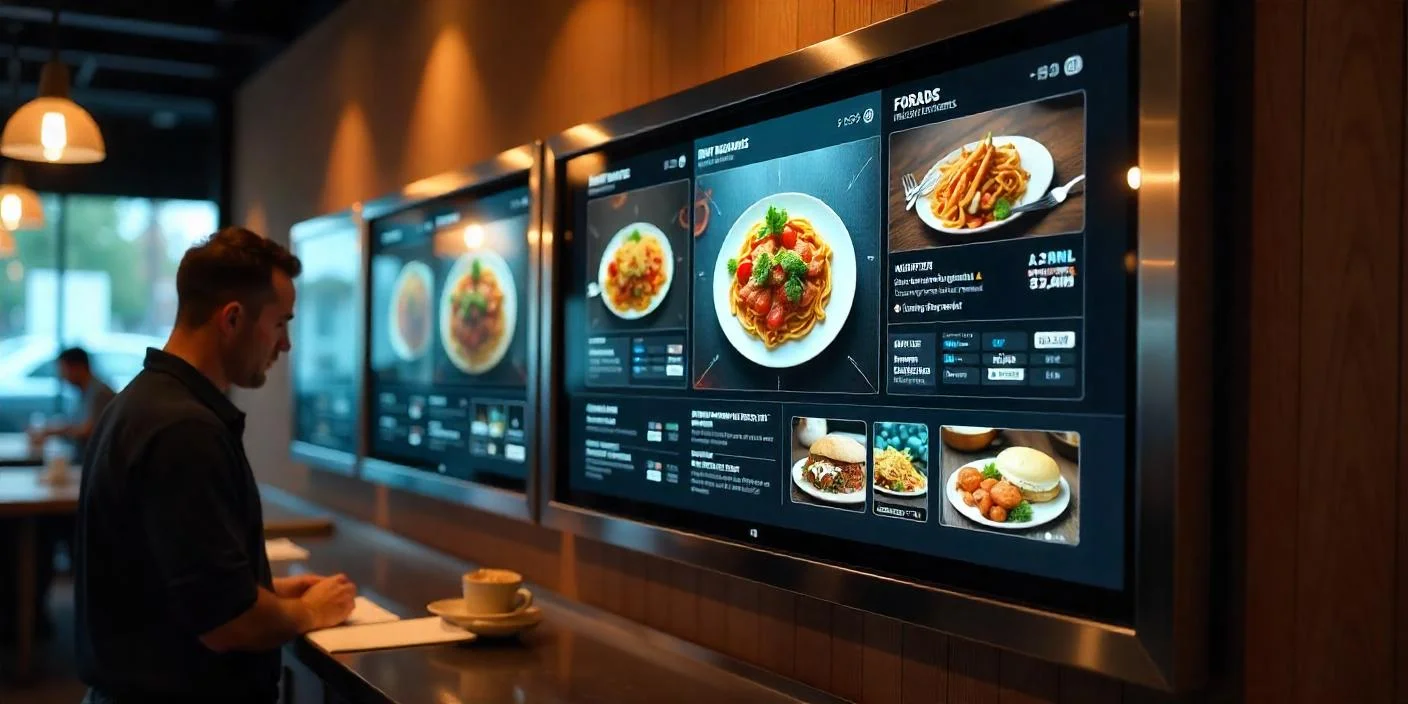The Importance of Digital Signage in Modern Restaurants
Restaurant digital signage is no longer a high-tech gimmick in today’s fast-changing hospitality environment: it’s a must. With the behavior of consumers trending towards ease, interactivity, and personalization, there is the ever-increasing emergence of digital signage for restaurants. Digital signage is transforming the restaurant industry from simplifying operations to engaging customers.
The Evolution of Restaurant Signage
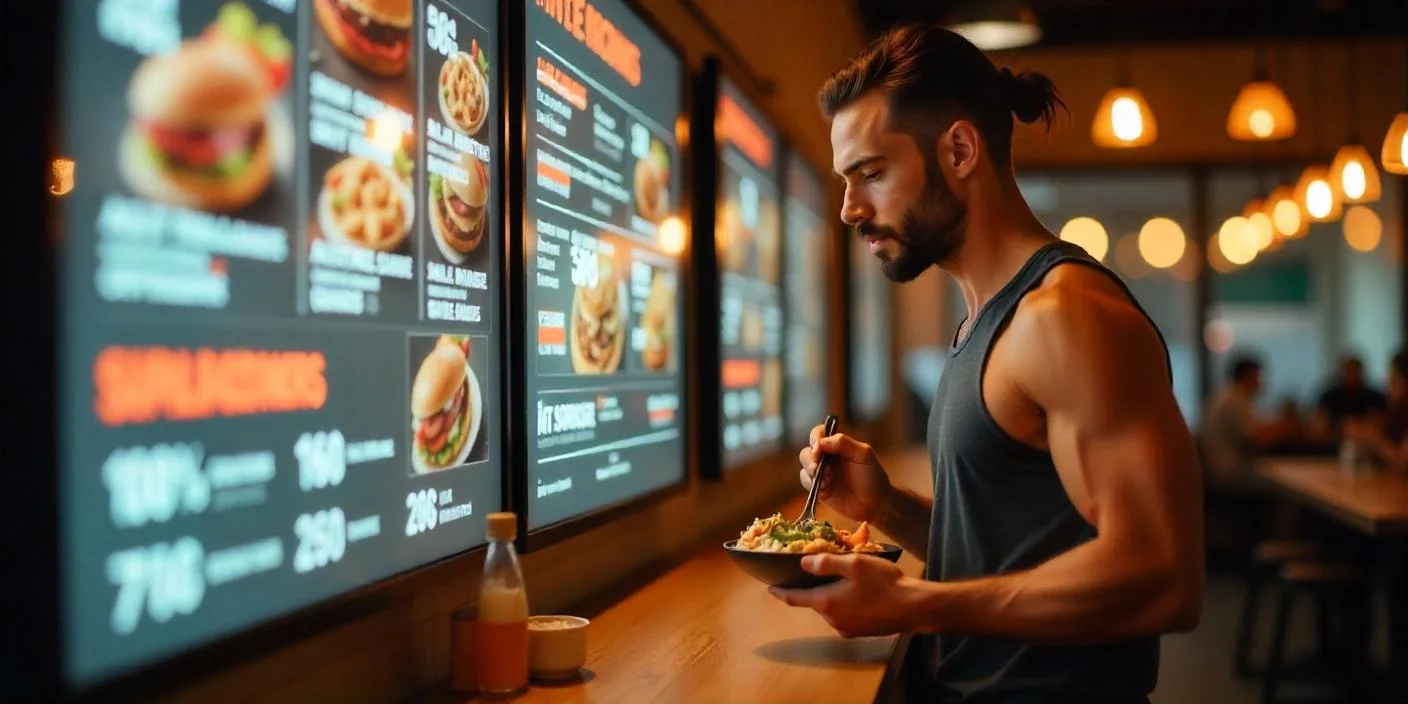
Restaurant signage used to be dominated by static chalkboards and printed posters, but there has been a seismic shift in this regard. Now, digital signage solutions provide dynamic, flexible, and real-time content, and traditional media just cannot compete with it. Such systems enable restaurants to make instantaneous messaging alterations, improve ambiance, and relate to their clientele more.
What is Restaurant Digital Signage?
Restaurant digital signage is an electronic display that uses digital content management software to promote menus, promotions, branding, and entertainment, among other digital content. These screens can be updated from a distance, providing quality visuals, videos, and animations. They appear in various versions (LED screens, touchscreen kiosks, interactive tablets), playing a specific role in the process of the client.
Important Parts of a Digital Signage System
Display Hardware
The display quality is critical in a digital signage system. Based on the environment of your restaurant and goals, the screens may differ in size, resolution, and functionality. For instance, outdoor digital signage displays for a drive-thru must be brighter and more weather-resistant when compared to indoor displays.
Content Management Software (CMS)
A strong CMS is important for real-time updates and scheduling. It is the core of the digital signage system where menus, pictures, videos, and animations are organized and played for different locations.
Media Players
Such small devices provide content from the CMS to the display. Media players support seamless playback, accept various media formats, and in some cases have analytics abilities to help trace the effectiveness of content.
Varieties of Digital Signage in Restaurants
Digital Menu Boards
These are the foundation of the digital signage in a restaurant. With digital menu boards, updating menus, prices, and promotions can be done in real-time, making it possible for restaurants to showcase changing content that can be commonly changed based on inventories and time-specific offers.
Promotional Signage
Promotional signage would show limited time offers or combo deals and would serve as an active and colorful way to entice people to consume new or high margin products. UMX capabilities of changing content in real-time ensure that messaging remains fresh and up to date.
Wayfinding and Self-Ordering
Particularly in big establishments, the Wayfinding and self-ordering signage assist customers in navigating and ordering at the restaurant. Just like the companies which provide delivery service, touchscreen kiosks can also display their menu items and therefore enable customers to customize their orders easily.
Entertainment and Engagement Screens
To enhance engagement, restaurants can post live feeds, trivia, as well as social media walls. This is a way of keeping the customers occupied as they wait, and this improves their experience and makes the place feel more alive.
Advantages of Digital Signage to Restaurants
Real-Time Menu Updates
The instant update of the content is one of the greatest benefits of digital technology. Restaurants can change prices, new menu, or daily specials, or limited time offers without having to print new menus that are costly and time-consuming.
Increased Customer Engagement
Digital signage with animated content, interactive interfaces, and personalized greetings win over customers’ attention and optimizes their experience. Interesting visuals and personalized content add to the experience and make it more memorable, thus bringing repeated visits.
Upselling and Cross-Selling
Restaurants can use digital signage to tactically promote high-margin items. Dessert shows after a meal, drink combos, or premium add-ons advertising can triple the AOV (average order value).
Operational Efficiency
With the CMS at the center of operations, the update of content in all the restaurants takes seconds. This eliminates manual work, makes things consistent in various franchises or chains, and minimizes printing and sharing costs.
How Restaurant Digital Signage Solutions Elevates the Dining Experience
Restaurant digital signage solutions helps to create a modern, neat environment in a restaurant. It offers interesting, insightful and entertaining content that will keep the customers busy and fulfill their needs whilst still contributing to their satisfaction. Passengers become better informed, less bored, and more in control when using digital menus and information.
Integration with POS and Restaurant Systems
Digital signage solutions will be able to connect with the point-of-sale systems; thus, the availability of menu and order tracking will be able to be updated in real-time. It revs up loyalty programs and customer databases to optimize customer experience and provides smooth operations between the front-end and the back-end systems.
Indoor vs. Outdoor Restaurant Digital Signage Solutions
Digital signage indoors is oriented to atmosphere, upselling, and entertainment, and outdoor signage, especially for drive-thrus, has to be bright, robust, and weather-proof. Both have different uses, and each has to be addressed with specific content and hardware solutions.
Custom Branding and Aesthetic Consistency
Digital signage helps restaurants to reinforce their brand identity. The fonts, colors, the image, and animations can all be customized to the specific restaurant style, keeping a harmonious branded appearance throughout all locations and touchpoints.
Content Strategies That Work
Dynamic Visuals
The attention-grabbing high-quality videos, motion graphics, and colorful visuals grab attention and hold the customers engaged. These dynamic displays can include such displays as food preparation, restaurant events, or seasonal promotions.
Time-Sensitive Offers
Organizing content according to the time of the day (e.g., breakfast, lunch, dinner menus) has the greatest effect on relevance and engagement. Through presenting the right offers at the right timing, digital signage prompts the customer’s action.
Customer Reviews & Social Proof
The new patrons are built with confidence and trust when real-time customer reviews or shout-outs on social media are shown. Testimonials, Instagram photos, and positive reviews all help to create a positive and inviting atmosphere.
Social Media Integration
The use of social media feeds being directly fed into the signage encourages user-generated content as well as increased brand visibility. Hashtag campaigns, live Instagram updates, and interactive content engage and connect with the customers to a brand.
Challenges in Implementing Digital Signage
In spite of these positives, however, the deployment of digital signage has its own challenges including the initial costs of installation, maintenance and the need to avoid possible content burn out. Regular updating, planning and creating consistent designs can help to ameliorate such challenges and yield maximum ROI.
ROI and Cost Considerations
Although the start-off costs of digital signage may appear excessive, the returns are enormous in the long run. More sales based on dynamic promotion, lower operational costs, and better customer engagement can lead to a positive ROI, with many restaurants experiencing payback within the first year.
Trends in the future of restaurant digital signage
AI-Powered Recommendations
AI technology will empower digital signage to come up with personalized recommendations depending on customer preferences and purchase history. This dynamic target will increase customer engagement and sales conversions.
Voice Interaction
Touchless interfaces based on voice commands will be more prevalent when customers are able to interact with digital signage in non-touching ways (useful after the pandemic).
Facial Recognition Personalization
Facial recognition technology will allow for personalized greetings or presents appropriate to the demographics of a user, engendering a level of highly personalized and engaging experience.
Data-Driven Menus
Menus will change in real-time, based on external factors like weather, traffic, or local events, providing a dynamic price and availability depending on the current state.
Take Your Restaurant to the Next Level with Digital Signage
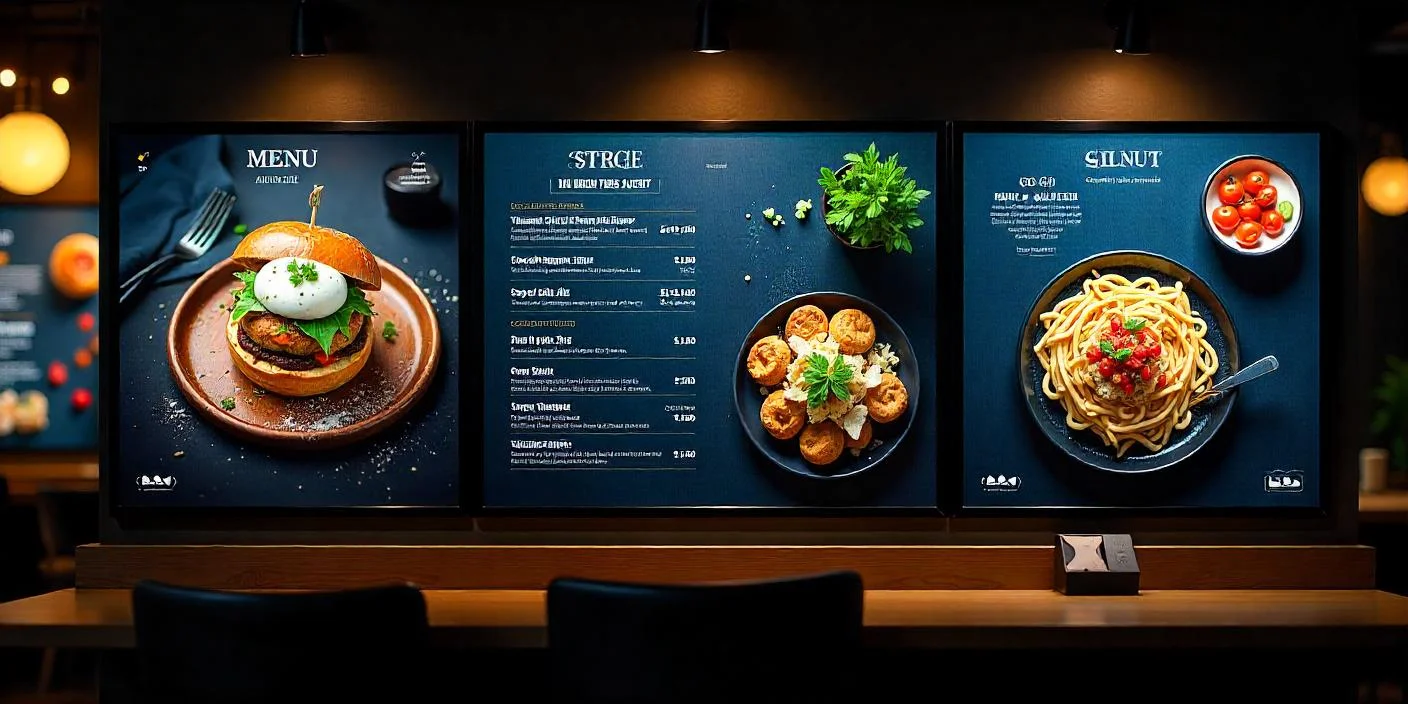
Incorporate the future of restaurant marketing and improve customer experience with the help of digital signage solutions. Select the best platform, personalize your content, and begin to gain better operations, branding, and sales today.
FAQs About Restaurant Digital Signage
What is digital signage in a restaurant?
It is a system of electronic displays to be used in displaying menus, promotion, branding, and entertainment, controlled by a content management platform.
How much does restaurant digital signage cost?
Costs are different depending on the type of screen, software options, and locations. Entry-level solutions begin at the hundreds of dollars, while enterprise solutions can go up to the thousands of dollars.
Can digital signage increase restaurant sales?
Yes. Digital signage can greatly increase the average order value and walk-in customers through promoting high-margin items, dynamic offers, and stimulating visuals.
Is digital signage suitable for small restaurants?
Yes. There are many scalable and affordable solutions that are aimed solely at the small, independent eateries and the quick-service restaurants.
Can I update the content remotely?
Yes. Most of the current-day systems provide cloud-based platforms whereby one can schedule and make the necessary changes regarding the content using any web-connected device.

